The Cleveland Orchestra – Around Towns
In his 2005 New Yorker article profiling The Cleveland Orchestra, Charles Michener carefully interweaves a subtext in his mostly optimistic article: Can an orchestra survive its city?
Unlike the other orchestras of the Big 5, The Cleveland Orchestra’s hometown has seen a population drop of nearly ten percent since 2000. Aware of trends in Cleveland’s vulnerable economy, The Cleveland Orchestra’s board, the Musical Arts Association (MAA), prepared a turn-around plan in 2003, not long after Franz Welser-Möst began his tenure as Music Director.
Under Welser-Möst’s leadership, The Cleveland Orchestra has expanded its activities at home, around the nation, and abroad. While Severance Hall has been The Cleveland Orchestra’s home since 1931, ongoing residencies have made The Cleveland Orchestra regular guests at Vienna’s Musikverein and in Miami, where the orchestra’s commitments encompass not only orchestra concerts but also education programs, outreach, and chamber music recitals.
Examining a timeline of The Cleveland Orchestra’s activities between August 2010 and February 2011 shows that an adventurous season has definitely been underway. Beginning in August, the orchestra departed from its longtime summer home at the Blossom Music Center, just outside Cleveland, for a thirteen-day tour of six European cities, including a residency at the Lucerne Festival in Switzerland, and concerts in Scotland, Austria, and Italy. In September, the orchestra inaugurated its ninety-fourth season, and performed at home through October. A ten-day tour of Japan and South Korea, which included eight concerts in four cities, highlighted November’s performance activities, and was the orchestra’s first Asia Tour since 1998.
After three weekends in January of Severance Hall subscription concerts, The Cleveland Orchestra toured the US, opening its fifth residency at Miami’s Arsht Center for the Performing Arts and its first intensive residency at Indiana University’s Jacobs School of Music. Following these annual residencies, the orchestra outpaced a heavy snowstorm and arrived in time to perform at Hill Auditorium in Ann Arbor. However, the orchestra’s concert at Chicago’s Symphony Hall, which would have been its first in Chicago since 2002, collided with the snowstorm that left Chicago in a state of emergency.
Snowbound in Ann Arbor, a number of the orchestra’s musicians, including concertmaster William Preucil, principal flutist Joshua Smith, and violist Joanna Patterson, teamed up with Classical Revolution to play chamber works at Silvio’s Organic Pizza restaurant in downtown Ann Arbor. The tour’s guest soloist, world-renowned pianist Pierre-Laurent Aimard, joined in the chamber readings as well, playing on an upright piano the restaurant happened to have. After finally leaving Ann Arbor, the orchestra arrived in New York City in time for two concerts at Carnegie Hall, and concluded with an afternoon concert at the New Jersey Performing Arts Center (with high attendance, even on Super Bowl Sunday).
Probably The Cleveland Orchestra’s most notable destination outside Cleveland is Miami, where the orchestra’s annual residency lasts a total of almost three weeks divided into two to three visits. Initially, the announcement of the orchestra’s residency was met with excitement mixed with some controversy, given the demise of Miami’s own professional orchestra, the Florida Philharmonic, in 2003. Now, after five successful seasons, the orchestra continues to draw full houses and contribute back to the local Miami community. Although the residency transports the orchestra from the chilling Cleveland winter to the refreshing warmth of Miami, the orchestra’s schedule is packed. In addition to orchestral concerts and chamber music,
the Cleveland musicians perform educational programs and engage with elementary students from Miami-Dade County Public Schools, as well as give guest masterclasses and coaching sessions at the University of Miami’s Frost School of Music and the New World Symphony. The orchestra’s short-term presence continues to resonate until the following winter.
Considering The Cleveland Orchestra’s recent itinerary, it may seem that Cleveland misses out on its world-class ensemble. However, when the orchestra is not touring as its city’s ambassador to the world, its role in Cleveland’s community is expanding to reach new audiences at home as well.
In October 2010, the Maltz Family Foundation gave a major contribution of $20 million to The Cleveland Orchestra to initiate a $60 million endowment campaign
to fund the Center for Future Audiences. Through this new center, The Cleveland Orchestra hopes to eliminate economic, geographic, and cultural barriers to concert attendance,
and aims to have the youngest orchestra audiences in the country by its centennial in 2018. A number of pilot programs, begun in the summer of 2009, made tickets to hear the orchestra at the Blossom Festival free for children under 12. This past summer, over 9000 children attended Blossom with their families, and the orchestra plans to entice more young people this coming summer by making tickets free to patrons under 18. But the program is not just about youth tickets. The orchestra plans to deeply discount tickets for the 18-34 age bracket as well, and will provide free bus transportation to and from matinee concerts from as far away as Akron, about forty-five minutes south. The orchestra has found that ticket cost and access have been major barriers in attracting new audiences; it is their hope that the new center and lower ticket prices will make it an irresistible destination.
While the Center for Future Audiences is still fresh in its organizational stage, another program has been at Severance Hall since the start of the 2009-10 season. Called Fridays@7, the program connects the orchestra to a party atmosphere, and is featured as a five-ticket subscription that aims to reach young professionals and other new patrons. What separates Fridays@7 from traditional subscription concerts is that the orchestra program lasts about an hour, without intermission, and usually includes one major work. After the orchestral concert, which is slightly less formal onstage and offstage (i.e., audiences often clap between movements), a reception with performers of world music continues in Severance Hall’s luxurious main foyer.
The energy of the “after-party” concerts at Fridays@7 emanates from percussionist Jamey Haddad, a Cleveland native who specializes in jazz and world music and has performed all around the world. In the spring of 2009, The Cleveland Orchestra performed Osvaldo Golijov’s Azul, a cello concerto, where Haddad was featured with cello soloist Alisa Weilerstein. The audiences’ acclaim for the piece and its performers made Azul a catalyst for Fridays@7, as it became clear that it marked a new opportunity for The Cleveland Orchestra. According to Personnel Manager Carol Lee Iott, the goal of Fridays@7 is to bridge a gap and introduce audiences to both the great orchestral repertoire and musics from around the world. In addition to attracting new audiences and patrons, the ultimate goal of Fridays@7 is to make The Cleveland Orchestra the musical center of Cleveland, where all kinds of music reach a common destination.
As successful as the Fridays@7 series is proving to be, Cleveland Orchestra musicians are also taking classical music to new settings and meeting new audiences with applause. Principal flutist Joshua Smith leads Orchestral Manoeuvres at the Dog (OMD), where the “Dog” refers to the Happy Dog restaurant in Cleveland’s west side. The concerts feature
chamber music movements performed by Cleveland Orchestra members at a bar, and Smith’s story has been reported on NPR and in the New York Times. Smith notes that in recent years, many major artists have had successful performances in bars and restaurants (like Ann Arbor’s Classical Revolution). He believes audiences want a closer look at the musical experience, they want to see what happens “behind-the-scenes,” and they want to get to know the performers. He’s been right. In recent OMD concerts, a cult-following continues to grow, so much so that buses have been transporting patrons to the restaurant.
In the state of the current economy, The Cleveland Orchestra is one of many major orchestras facing challenges and asking if the traditional business model is sustainable. Each city has different sensibilities, and The Cleveland Orchestra is maximizing its strengths and attracting new audiences at home while expanding its horizons around the country and abroad.

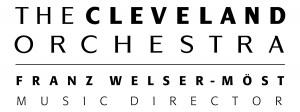
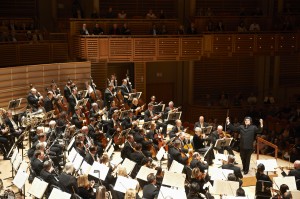
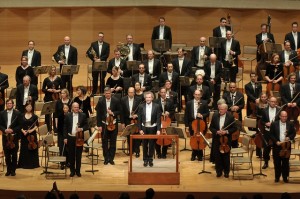
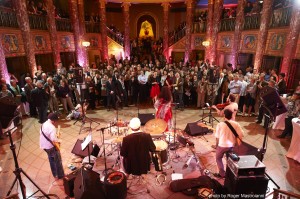
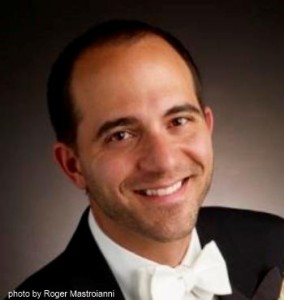
No comments yet.
Add your comment